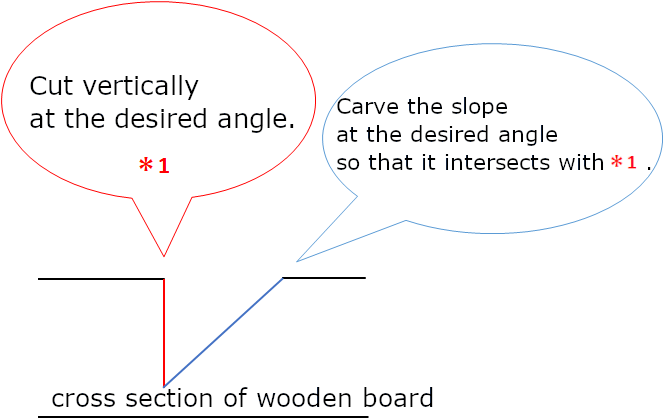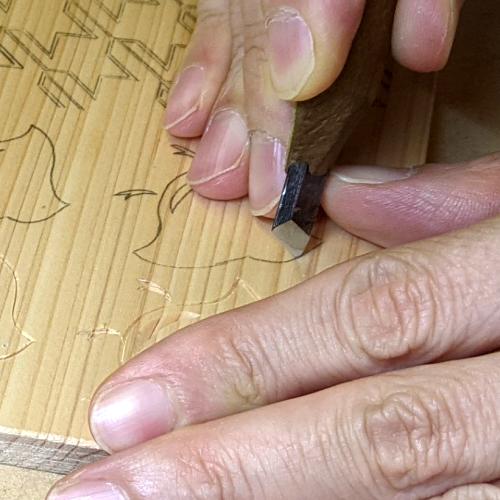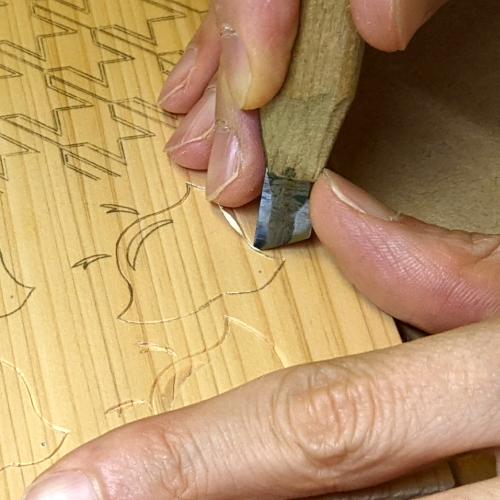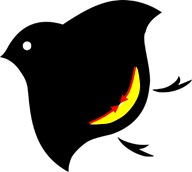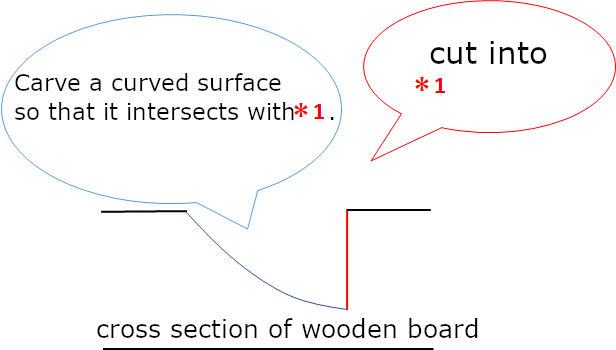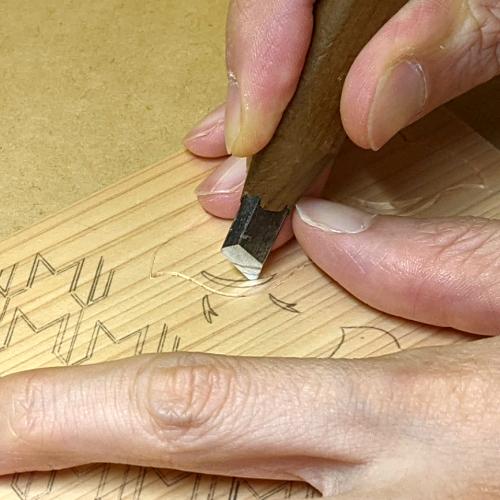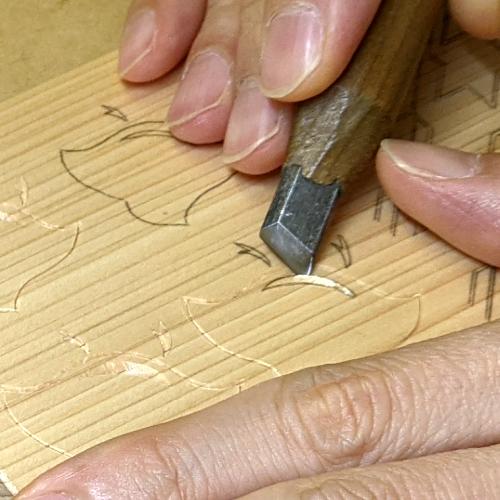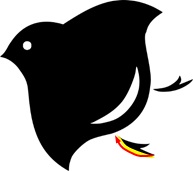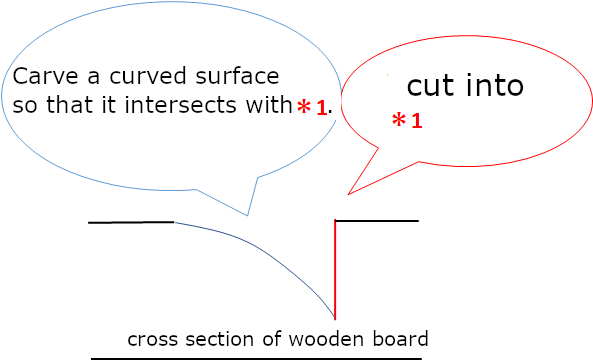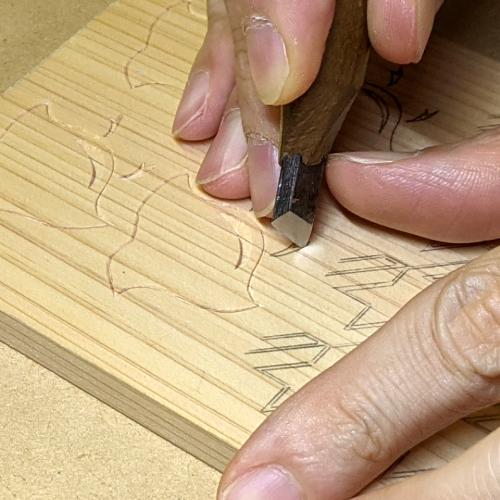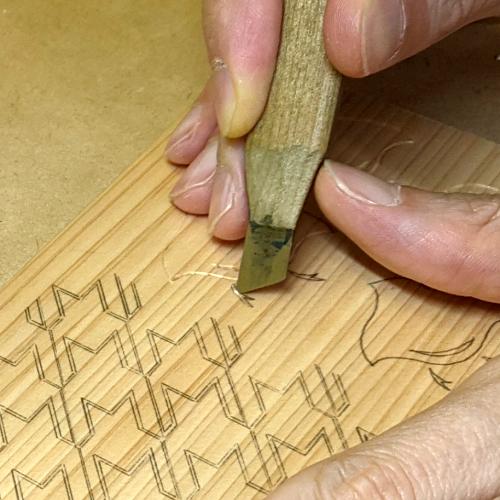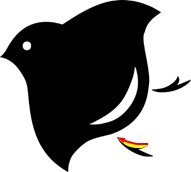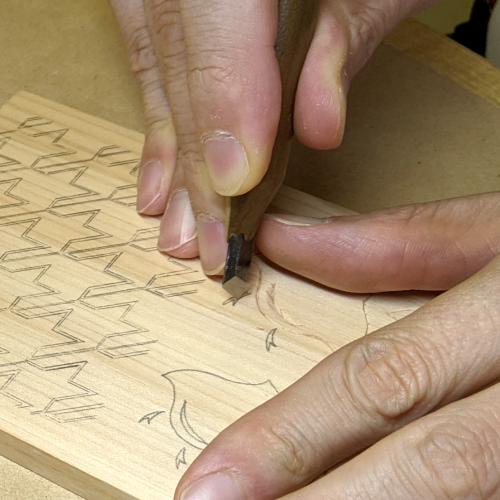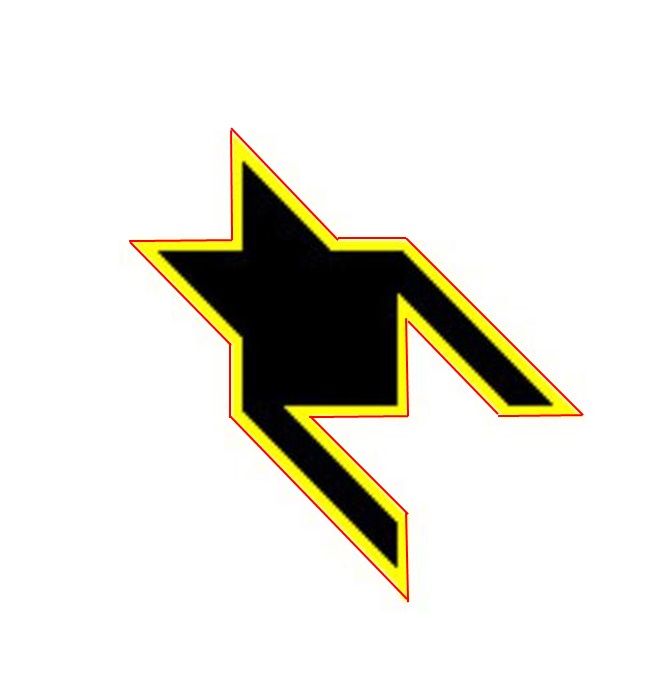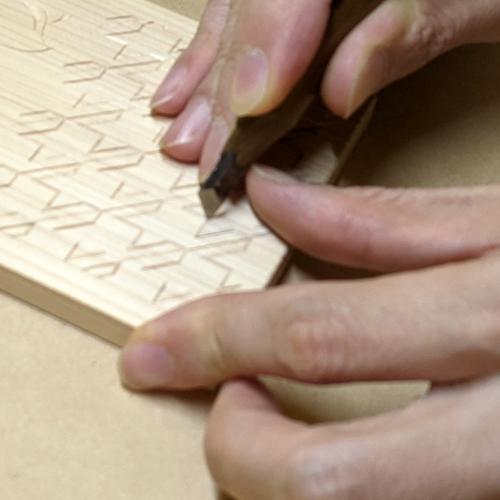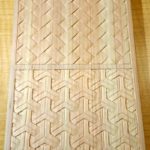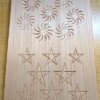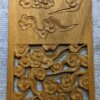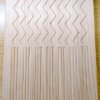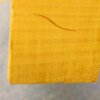How to carve patterns Part 11 ~Chidori and Chidori-Goshi~
This time we use a sharp chisel and a drill.
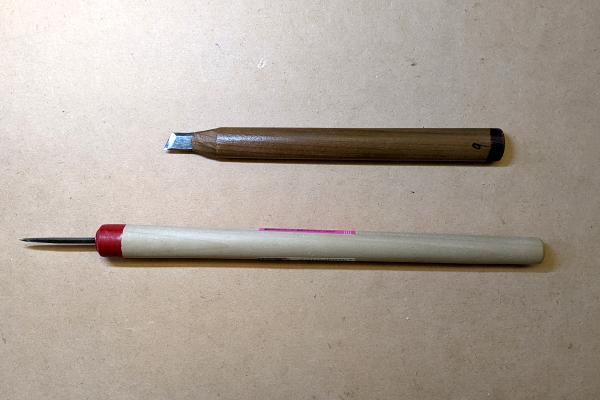
The patterns we be working on are "Chidori" and "Chidori-Goshi".
"Chidori" is a pattern of small birds that live near water and fly in flocks, and "Chidori-Goshi" is a pattern of small birds arranged in a grid.
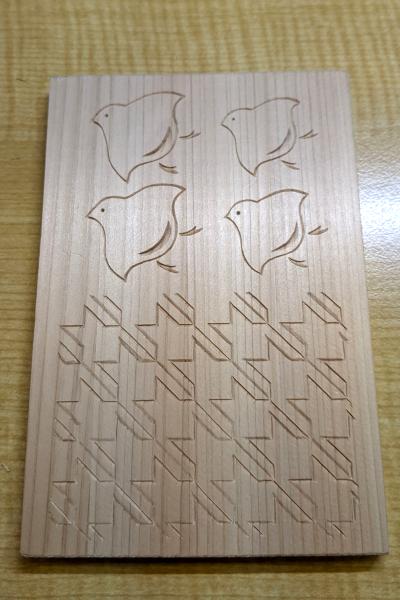
Preparation
Use carbon paper to trace Chidori and Chidori-Goshi onto a postcard-sized wooden board. The sketch can be downloaded from here (PDF of Chidori and Chidori-Goshi) , so please use it.
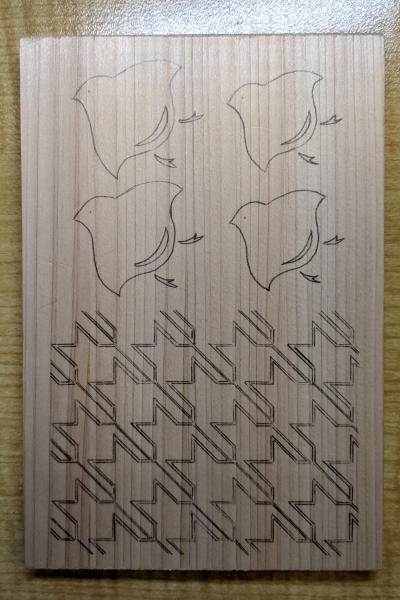
1. How to carve Chidori
First, make a cut at the desired angle at the red line in the diagram below, and carve a slope from the outside to intersect with the cut.
Next, carve the red line and yellow part of the belly in the same way as pattern 1 of the Kemanmon.


On the bottom side of the foot in the figure below, make the cut so that it gets deeper as you go in the direction of the red arrow, and the cross section is carved so that it curves outward like Pattern 1 of Kemanmon.
The wood in the foot part is to prone to splitting, so I recommend carving it deeper little by little.
Next, make a cut on the upper side of the foot so that it gets deeper as you go in the direction of the red arrow, and carve the cross section so that it curves inward, just like pattern 2 of Kemanmon .
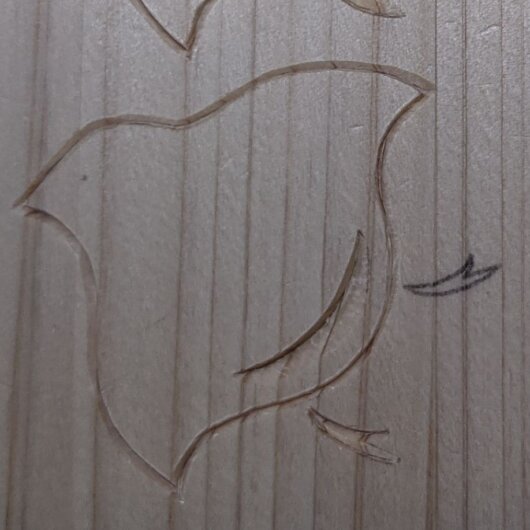

Carve the other leg in the same way, and finally use an drill to make a hole at the desired depth for the eye.
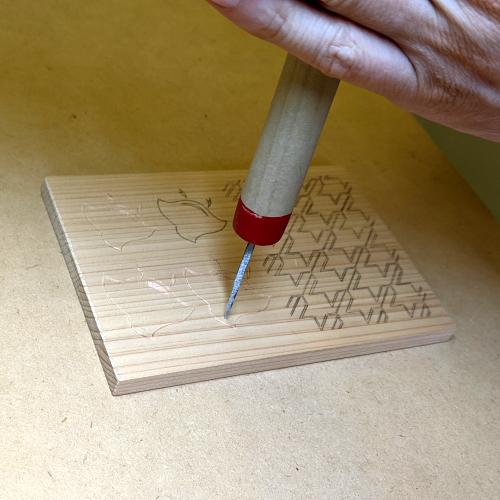

If you can carve Bundo-Tsunagi, Tatewaku, and Kemanmon, you should be able to carve Chidori without any problem.


2. How to carve Chidori-Goshi
Make a cut with the sharp chisel at the red line in the figure below, and carve the yellow part on the slope so that it intersects with this cut.
Since it is difficult to remove wood chips when carving the slope, it is a good idea to make cuts in the areas shown by the red arrows below as necessary. Make this cut gradually deeper in the direction of the arrow.
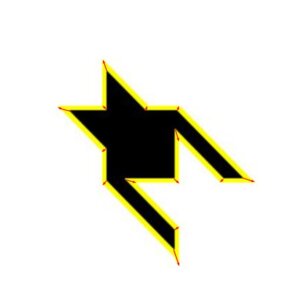



In areas where the wood is prone to cracking, do not carve in one go, but carve shallowly several times.
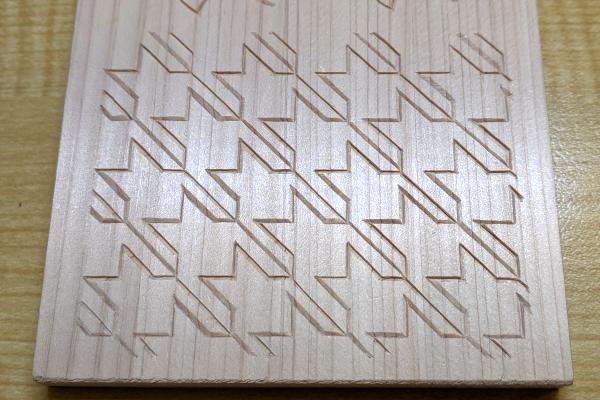

How to carve patterns
- From the lattice to the scales
- Raimon
- Asanoha and Sayagata
- Seigaiha and Sippo-Tsunagi
- Higaki and Kumikikko
- Mimasu-Tsunagi and Mimasu-Chirashi
- Ryusui
- Bundo-Tsunagi and Tatewaku
- Yamajimon and Misujidate
- Kemanmon and Gobosei
- Chidori and Chidori-Goshi ←Current page displayed
- Nejiume (Twisted plum)
- Kikubishi and Yaegiku
- Ichimatsu and Sankuzushi
- Kikko and Yagasuri
- Clouds
- Waves




